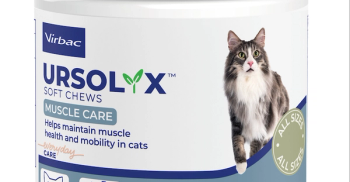
Journal Scan: Can milk thistle be used to treat liver disease?
Natural remedies abound for treating common diseases in people and pets, but what exact role they should play remains undetermined. This study looked specifically at the use of milk thistle for helping pets with liver disease.
Untitled Document
Why they did it
Natural remedies abound for treating common diseases in people and pets, but what exact role they should play remains undetermined. This study looked specifically at the use of milk thistle for helping pets with liver disease.
What they did
In this article, the authors review the pharmacokinetics and potential treatment applications of Silybum marianum, or milk thistle. Silibinin is the predominant compound in silymarin and the compound most often reported in milk thistle formulations.
What they found
Milk thistle has poor oral bioavailability because of extensive conjugation and biliary excretion. It is often complexed with phosphatidylcholine to improve oral bioavailability.
Silibinin is thought to provide benefit via free radical scavenging and inhibition of lipid peroxidation as well as through anti-inflammatory effects associated with inflammatory cytokine suppression and leukotriene formation inhibition. Silibinin has also demonstrated antifibrotic properties by interrupting myofibroblast formation and by limiting fibrous tissue production. In rats, silibinin has been shown to enhance protein synthesis that is necessary for hepatic regeneration and repair after injury. Studies in people and rats or mice have demonstrated a wide margin of safety for this drug.
The authors discuss the current therapeutic applications of this drug based on human and animal data:
Intoxication
- It has been shown to be hepatoprotective in dogs after Amanita phalloides intoxication by limiting oxidation and inhibiting uptake of phalloidin toxin into hepatocytes.
- It has been shown to prevent an increase in hepatic enzyme activity in rats exposed to carbon tetrachloride, acetaminophen, and arsenic as well as in studies involving radiation exposure and doxorubicin use.
Hepatitis
- It has been used in people with alcoholic liver disease to decrease ethanol-induced production of free radicals.
- For nonalcoholic fatty liver disease, it is thought to limit glutathione depletion and peroxide production and to prevent hepatic mitochondrial dysfunction.
Cirrhosis
- It is thought to improve antioxidant status, decrease collagen production, and limit glutathione depletion.
Take-home message
There are no randomized clinical trials evaluating milk thistle use in clinically affected animals with liver disease, but studies in animal models thus far are promising. It is important to remember that this drug should not be used as the sole therapy for patients with liver disease and that there is currently limited pharmacokinetic and pharmacodynamic information about milk thistle in dogs and cats.
Hackett ES, Twedt DC, Gustafson DL. Milk thistle and its derivative compounds: a review of opportunities for treatment of liver disease. J Vet Intern Med 2013;27(1):10-16.
Link to abstract:
Newsletter
From exam room tips to practice management insights, get trusted veterinary news delivered straight to your inbox—subscribe to dvm360.




